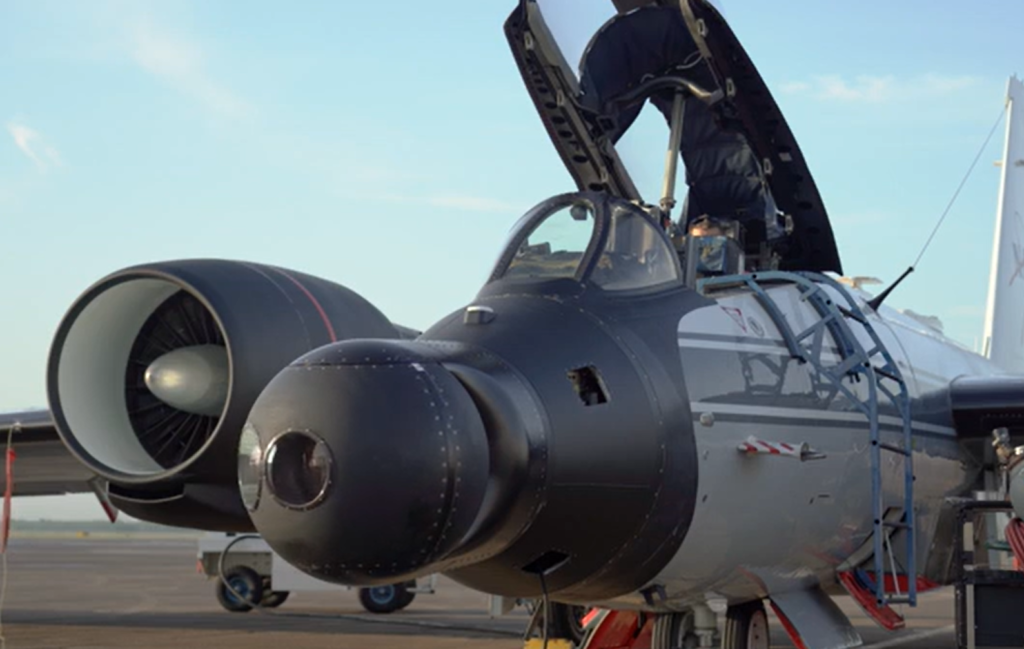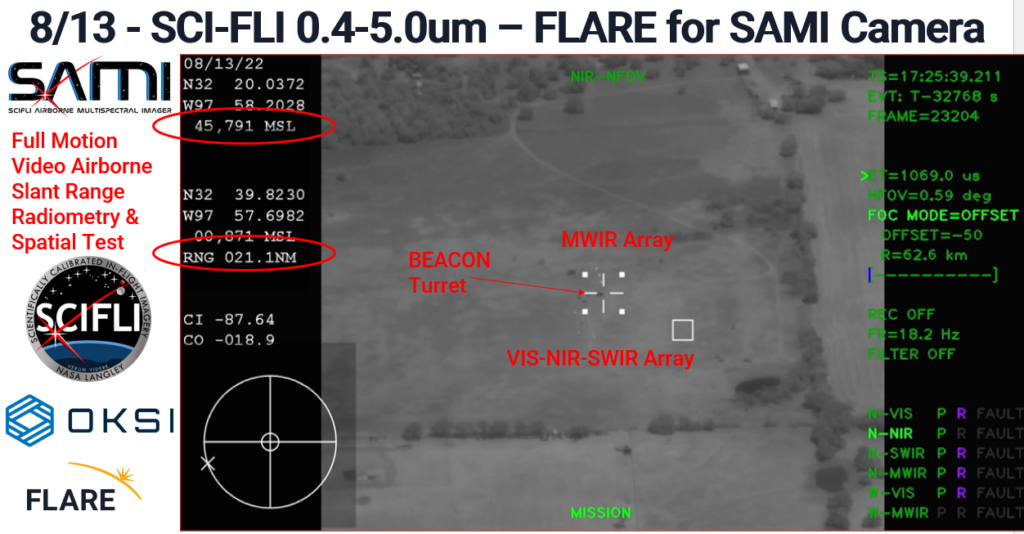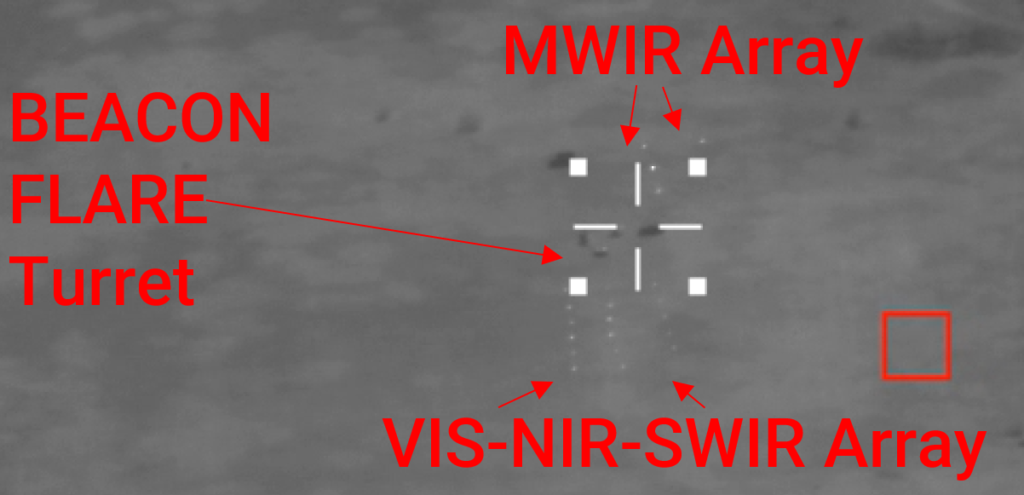November 18, 2022
A monumental event occurred on November 16, 2022, when NASA was finally able to launch Artemis 1 into Space, with the goal of its capsule Orion to circle the moon and return to Earth later in December 2022.
Leading up to this anticipated launch, Labsphere’s scientists teamed with NASA through a contract opportunity with Opto-Knowledge Systems, Inc. (OKSI) to put Labsphere’s technology to the test. Labsphere’s Integrating Spheres were used for on-ground calibration for pre and post launch, and Labsphere’s FLARE technology offered a new path for in-flight calibration that is now being explored by both NASA and Labsphere.
Back on August 13, 2022, Labsphere’s automated BEACON FLARE Turret system was able to target and track a calibration signal to the NASA Langley Scientifically Calibrated In-Flight Imagery (SCIFLI) camera system.
The SCIFLI camera system, in the payload pod is called the SCIFLI Airborne Multispectral Imager (SAMI) and it flies in the nose of a NASA WB-57 Aircraft at high altitude and at several nautical miles from its target. The NASA WB-57 Aircraft is an “airborne asset that is used quite often for both launches and re-entry imaging missions” according to a podcast Imaging Artemis 1 with SCIFLI recorded by NASA EDGE on August 26, 2022.

According to Matthew Boyda, a Software Developer at NASA Langley Research center who was featured in the NASA EDGE podcast, “[The reason why we use the WB-57] is because it is a high-elevation asset, meaning that we can get higher above more clouds than most of the other aircraft that we have access to. [For the Artemis 1 launch], the SAMI payload, which is what we call the whole system with all the imagers inside, will be placed inside of a ball turret on the nose of the WB-57, which has two rotational degrees of freedom, which will allow us to point it at the Artemis as it launches. And it will be operated from the rear seat of the jet. [The SAMI is] an imaging payload that measures different wavebands of light, some bands that we can see, some bands that we can’t in order to try and obtain scientific imagery for launches and re-entry missions in addition to other support that we may provide for NASA commercial crew program”.
Because of SAMI’s calibration, the SCIFLI camera system allowed the NASA-SCIFLI team to “capture super high-fidelity imagery of the [Artemis 1] rocket” upon launch [on November 16th] and will also allow them to “capture parachutes on re-entry across multiple spectrums” according to the podcast.

Looking closer into Labsphere’s BEACON FLARE Turret system which targeted and tracked a SCIFLI calibration signal in August, the image above shows a still frame of real-time video of the NIR channel of the multispectral imager as it flew at >45,000ft altitude and at a slant range of >21 nautical miles from the Labsphere FLARE targets.

Simultaneously, Dr. Brandon Russell, Labsphere’s lead scientist, with NASA’s help was also able to manually position over (18) mirror targets for the VIS-NIR and SWIR camera bands and (4) mirror targets for the MWIR channel. This intense calibration campaign was mounted as a potential means for improved radiometric and spatial characterization and calibration of launch and return space missions with the SAMI imager.
Earlier this week on November 16, the SCI-FLI Team was able to capture information on the early morning launch of the ARTEMIS 1 mission in which the new heavy-lift, Space Launch System (SLS) which carried the Orion spacecraft to its trajectory for its lunar fly-by. Congratulations to the NASA SCIFLI Team!
